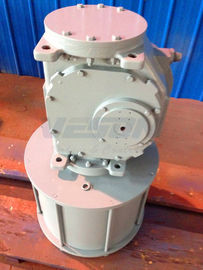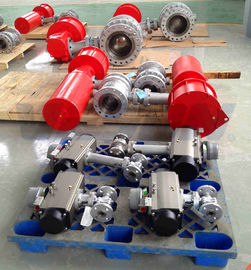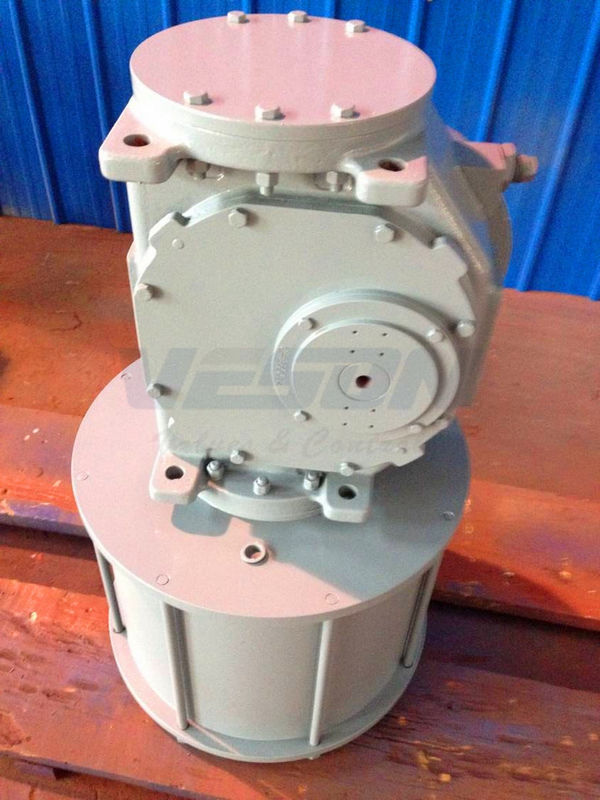SS CS Heavy Pneumatic Actuator For Pneumatically Emergency Shut Down Valves
Product Details:
| Place of Origin: | China |
| Brand Name: | veson |
| Certification: | ISO CE |
| Model Number: | VSF |
Payment & Shipping Terms:
| Minimum Order Quantity: | 1 |
|---|---|
| Price: | EXW Fob shanghai |
| Delivery Time: | 6-8 weeks |
| Payment Terms: | L/C, T/T |
| Supply Ability: | 10000 |
|
Detail Information |
|||
| Material: | SS CS | Shut Down Valve: | ESDV |
|---|---|---|---|
| Color: | Red | Operation: | Pneumatically Or Hydraulically |
| Key Words: | Emergency Shutdown Valve | Media: | Air Pneumatic |
| Standard: | ISO5211 、ISO5210-DIN3337 | ||
| High Light: | control valve actuator,spring return pneumatic actuator |
||
Product Description
Pneumatically Emergency Shut Down Valves Heavy Duty Pneumatic Actuator Heavy Duty Pneumatic Actuator
Pneumatic actuators come in many design types, but all share the same need for basic understanding of how their torque operates a valve. Whether you size a valve yourself, or you get someone else to do it, accuracy is critical. Incorrectly sizing an actuator can lead to a multitude of problems. Sometimes an actuator will have enough torque to open a valve but not enough to close it. Sometimes a valve may get stuck in mid-stroke. Other times, an actuator may provide so much torque that it damages the stem of the valve which it is operating.
When sizing an actuator, first consider the valve’s torque requirements. You need to consider
- Break Torque
- Running Torque
- Closing Torque
- Maximum Shaft Torque
Different valve types have completely different torque signatures. For example, a metal seated butterfly valve requires a large amount of torque to break or close and very little torque while traveling between the two positions. A metal seated ball valve requires a large amount of torque to open or close but also has an elevated torque requirement while traveling.
Some basic valve definitions you need to know are:
Break Torque
Also known as Opening Torque. This is the amount of torque required to start the movement of a valve from the closed position.
Running Torque
Also known as Mid-Stroke Torque. This is the amount of torque required to maintain movement of the valve between open and closed positions.
Seating Torque
Also known as Closing Torque. This is the amount of torque required to seat a valve into its closed position.
Maximum Allowable Stem Torque (MAST)
The torque required to permanently deform or break the valve stem.
Safety Factor
A given multiple of the valve’s operating torques to ensure proper operation of the actuator. Many customers ask for a 25% safety factor so if a valve requires 100 in-lb torque to open, you would size the actuator’s break torque at 125 in-lbs.
Modulating Service
Also known as Throttling Service. A valve that is used as a control valve may have its position continuously increasing, decreasing, or stopping movement through its mid-stroke in order to control output through the valve. Modulating valves are rarely fully open or fully closed. Modulating valves usually require more torque than simple on-off valves.
On-Off Service
A valve that is used for shut-off. It will either be used fully closed or fully open and will not stop during mid-stroke.
Sizing an Actuator by Understanding Torque.
Before you size an actuator, check with the valve manufacturer for their valve’s torque requirements in your service.
Most manufacturers will publish a minimum torque required at a given operating pressure to open the valve in water service. In most instances, closing torque is the same as opening torque. Others will only publish the torque required at maximum operating conditions. Rarely do valve manufacturers publish the running torque of their valve. In any case, you may not have enough information to properly size an actuator even with the published torques based on what type of actuator you chose. Be very careful to also consider what media is flowing through the valve. Some services will increase the torque required to operate a valve. Also, consider if your customer requires you to add a safety factor to the valve torque prior to sizing an actuator.
Actuator design will affect the sizing. Rack and Pinion actuators produce a constant torque output throughout the stroke. Scotch Yoke actuators produce reduced torque in its mid-stroke. Please look at the manufacturer’s published torque outputs and make sure you are aware of the torque signature of the actuator. A Spring Return actuator has reduced torque the further it is operated because it is overcoming internal springs that are used to return the actuator to its initial position once air is removed. You will need to know your customer’s real air supply available at the valve in order to properly size an actuator. Just because their compressor is set at a certain pressure, does not mean they have the same pressure at the valve.
Some basic actuator definitions you need to know are:
Single Acting
Fail Open or Fail Closed. Actuator with internal spring that will return the valve to the initial position on loss of air supply. Also known as Spring Return.
Double Acting
Air is required to open or close the actuator. The actuator will fail in place with the loss of air supply. Also known as Direct Acting.
Start of Air
The amount of torque produced by the air supply to the actuator to start a movement from the normal position.
End of Spring
The amount of torque that the internal springs provide in the normal position with all air pressure removed. In this position, the spring is considered to be in its relaxed position (with a pre-load).
Minimum Air
Lowest torque valve of the actuator produced by the air supply. Depending on actuator type, this may be the same value as end of air. Other times it may be the mid-stroke position. Please refer to actuator’s manufacturer.
End of Air
The amount of torque produced by the air to hold the actuator at its end of travel position.
Start of Spring
The amount of torque produced by the internal spring at the actuator’s end of stroke position. This is the force the actuator will supply as the air is removed and the actuator reverses directions from its end of travel position.
Actuator Sizing Charts
Some people want us to size their actuator, but many people prefer to size their own actuators. The following charts will help you gather and document the information you will need to properly size your actuators.
When I size a double acting actuator, I fill in the following chart:
When I size a spring return fail closed actuator, I fill in the following chart:
The valve torque must be the lowest value in each row. MAST must be higher than any other torque value in the chart.
When I size a spring return fail open actuator, I fill in the following chart:
The valve torque must be the lowest value in each row. MAST must be higher than any other torque value in the chart






